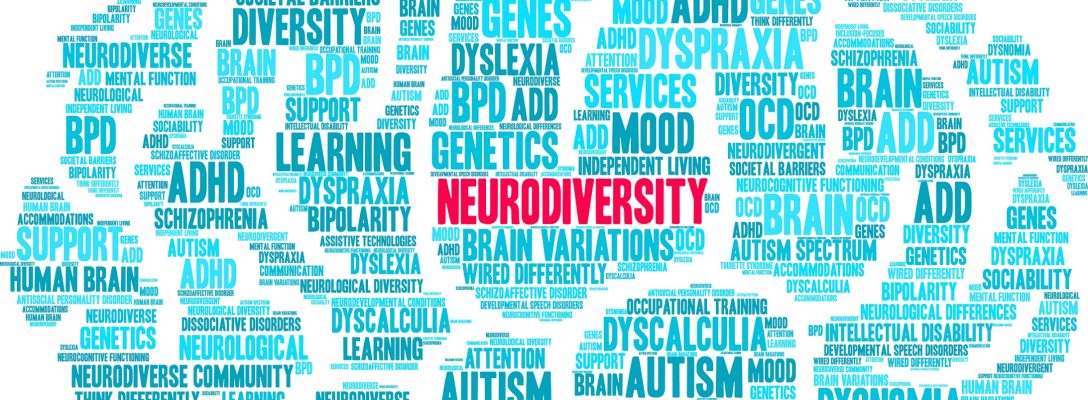Why we should celebrate all types of neurodiversity in STEM
Author: IntaPeople | Date published: 17/02/22


Many STEM organisations have embraced the concept of diversity, encouraging people from all economic and cultural backgrounds and creating an equal opportunities environment to address the gender gap too. However, one form of diversity that is usually left out of diversity and inclusion initiatives is neurodiversity. According to the Institute of Leadership & Management , only 27% of employers could say they were certain that appropriate references were included in their diversity and inclusion policies. We’re very comfortable celebrating how physically different we are from one another, but we need to also celebrate neurological differences too.
Leading tech companies, Microsoft and Dell, were amongst the first to recognise the diversity discrepancy and create entire hiring programmes designed to specifically support neurodivergent talent and have policies in place to support them as employees too.
Neurodiversity definition
Neurodiversity is a broad term but can be loosely understood to refer to the entire spectrum of cognitive behaviours and thinking patterns. Within that you can create two groups; the “neurotypical” and the “neurodivergent”. Neurotypical people tend to have across-the-board cognitive skills, whereas neurodivergent people excel exceptionally in some areas and may find others more challenging. Neurotypical people can be thought of as great generalists, and neurodivergent people as incredible specialists.
Types of neurodiversity to be aware of
Although there is a huge movement within the STEM world to be more accommodating and supportive of all diversities, there is still a stigma surrounding neurodiversity that needs to be dispelled through education.
It is estimated that 1 in 7 people in the UK are neurodiverse (roughly 15%), and there are many different forms of neurodiversity. It is important not to let stereotypes form any of your understanding of neurodiversity as while some conditions, like autism to ADHD, dyspraxia, dyslexia and many more, may have shared traits, no two people will be impacted in the same way, have the same skills or share the same challenges.
How to support neurodiversity in the workplace
It is estimated that up to 40% of employees in the STEM fields have not told their employer about their neurodivergent traits or are uncomfortable doing so. This has to change as the benefits of neurodiversity in STEM are unlimited! STEM is naturally a meeting ground of new ideas, creative thinking and specialist knowledge and skills, all of which are areas that neurodivergent people excel in. We’ve prepped some useful ways you can better support neurodiverse talent in your organisation:
-
Offer neurodiversity training for your managers
Neurodiversity training is a broad discipline but will help your managers understand the different requirements of different types of neurodiversity and be better able to accommodate it during a project, within their team and when hiring. It will help them recognise particular biases that colour the way they interact with neurodivergent people on a project or during interview (for example, making snap judgements of disengagement or discomfort when a team member or candidate can’t make eye contact).
-
Adjust your hiring practices
Having a better understanding of neurodiversity requirements through neurodiversity training and education will give your hiring managers more flexibility to accommodate different needs. It will give them the ability to judge if eye contact or small talk are actually causes of anxiety or if they’re appropriate ice breakers during interview, and broaden their skills in creating supportive and relaxed environments for different candidates.
-
Review your diversity and inclusion policy
It is always important to practice what you preach when it comes to diversity and inclusion. Review all of your documents and ensure that there is appropriate wording expressing your policy towards neurodiversity. Ensure you also update any public announcements or communications on the topic too, not just internal documents. This will show your unified approach to the topic and appear more authentic to any future neurodiverse candidates and employees.
-
Encourage feedback from your neurodivergent employees
What better way to find out how your current policy performs than by asking your neurodiverse employees what they think could better benefit their work? This is a dynamic exercise as many employers found that their neurodiverse talent had very different challenges to the office or working from home then their neurotypical employees. Things like technology distractions, pop ups, noises, conflicting projects and too many people talking in a meeting can challenge people who require limited sensory stimulation to concentrate. To combat this, consider implementing tech applications that limit notifications or structured project management software for full visibility.
-
Create a culture of learning, support and flexibility
The most important thing to do when supporting neurodiverse talent is ensure a unified culture of support and accommodation towards people with different needs. This comes from education at all levels, buy in from the top down, clear communication of company policy and practicing what you preach.
Are you looking to create a more diverse and inclusive STEM workplace?
If you are an employer looking to create a diversity and inclusion-led STEM recruitment strategy, we can help you recognise where you may be creating barriers between your company and diverse applicants, from the job description to where and how you market your role and even training to support neurodivergent applicants at interview.
Get in touch today to discuss your recruiting needs
